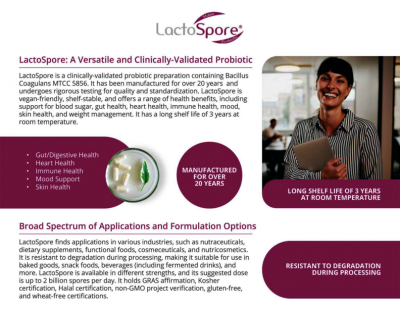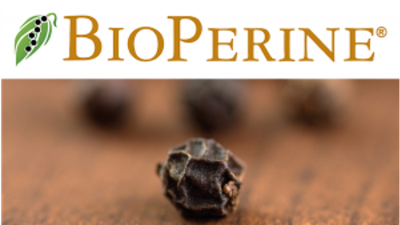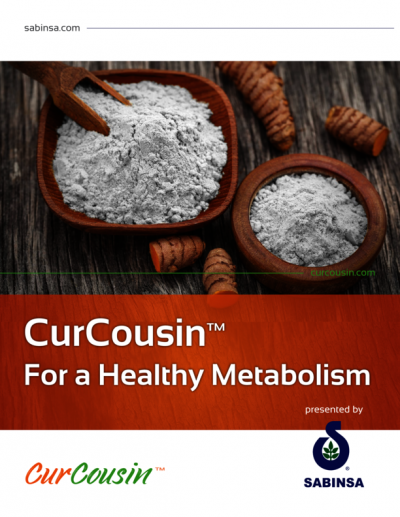Promotional Features
CurCousin™: Sabinsa’s Patented Calebin A - Promotes Healthy Metabolic Function
CurCousin™ is Sabinsa’s branded ingredient containing Calebin A, a curcumin analog naturally present in Curcuma longa and Curcuma caesia (black turmeric). It helps balance cholesterol and supports a healthy body weight by inhibiting fat cells, among other benefits. The product is clinically studied with a dosage of 25 mg twice a day. Sabinsa holds 65 patents on CurCousin, which has self-affirmed GRAS status.
Calebin A (Feruloylmethyl ferulate), is found naturally in trace amounts in Curcuma species (Curcuma longa/caesia) (). Calebin A belongs to a family of ferulate esters, called Calebenoids, which seem more stable than Curcumin in physiological medium. It also shows higher chemical stability in acidic and basic media in contrast with the noted instability of Curcumin at higher pH values while sharing several physiological properties with Curcumin. The Calebenoids seem to arise from a biological Bayer-Villiger type of transformation of curcuminoids (). Calebin A could also be bio-transformed from Curcumin by endophytic fungi producing Baeyer-Villiger monooxygenase (1,2). Calebin A was also shown to exhibit a variety of pharmacological activities similar to Curcumin (3).
Even though Calebin-A and Curcumin originate from the same plant and co-occur in the rhizome, Calebin-A has keto and ester group structural features whereas Curcumin sports 1,3-diketonic structure nearly fully enolic form. Curcumin is highly conjugated with bright color but Calebin-A is not. While Curcumin is unstable in higher pH environments, Calebin-A is stable in alkaline conditions. Both the compounds are Michael acceptors. Both possess anti-inflammatory and anti-oxidant actions. Some of these differential features in the structure render Calebin-A a more potent agent in the protection of PC12 cells from beta- amyloid toxicity, with higher growth-inhibitory properties on human hepatoma cell line HepG2 and a potent material for alleviating metabolic syndrome risk factors inclusive of underlying weight control.
Calebin A has a wide spectrum of applications against:
- Metabolic syndrome
- Hypercholesterolemia
- Hepatic steatosis
- Osteoporosis
- Articular cartilage regeneration
- Inflammation and arthritis
Reduced-fat deposition/obesity: Experiments in high-fat diet (HFD) fed mice proved the potential of Calebin A in managing the adverse conditions of MetS. Administration of Calebin A reduced the differentiation of the fat depositing adipocytes and inhibited lipid accumulation in 3T3-L1 adipocytes through decreasing cell numbers. Moreover, Calebin A induced lipolysis in differentiated adipocytes in HFD mice. The results clearly indicate that Calebin A is effective in preventing HFD-induced body weight gain and adiposity.
Hepatic steatosis: In high fat-fed rats, administration of Calebin A induced lipolysis in differentiated adipocytes, and a significant reduction in hepatic triglycerides, lipid accumulation, inflammatory infiltration, and ballooning degeneration of the liver. The preclinical studies suggest the novel application of Calebin A to prevent and treat obesity and non-alcoholic fatty liver disease (4).
Hyperlipidemia: Administration of Calebin A had significantly reduced serum levels of total cholesterol and triglycerides in HFD fed mice, indicating the effect of Calebin-A on improving lipid homeostasis caused by the HFD.
Improved serum markers: Calebin A favorably modulates adipokines in HFD fed mice. Notable modulatory properties of Calebin A included inhibition of leptin production, increase in adiponectin expression, and inhibition of local (adipocyte) and systemic inflammation caused by pro-inflammatory cytokines, like tumor necrosis factor (TNF-α), interleukin (IL)-6 and IL-1β.
Clinical Study
Majeed et al (2016) evaluated the clinical efficacy and safety of Calebin A in managing weight in 40 obese or overweight individuals for 90 days. The subjects were administered Calebin A capsules (25 mg, one capsule twice a day), and significant reduction in body weight and body mass index were observed in the Calebin A group compared with placebo after 90 days. Additionally, a significant change in serum biomarkers like leptin, adiponectin, and cortisol was observed in the study subjects with improved blood lipid profiles. Moreover, Calebin A was found to be safe and well-tolerated by all the subjects (5). The clinical study showed that Calebin A is effective in managing healthy body weight by inhibiting adipogenesis and is an ideal candidate to support metabolic health.
Sabinsa
20 Lake Dr. East Windsor, NJ 08520
Tel: (732) 777-1111 / Fax: (732) 777-1443
_________________________________
References
- Majeed et al., AMB Express, 9(1), 1-13, 2019
- Majeed et al., SynOpen, 1(1), 0125-0128 (2017)
- Oliveira et al., Journal of Pharmacy & Pharmaceutical Sciences, 18(4), 494-514, 2015
- Lai et al., Molecular Nutrition & Food Research, 59(10), 1883-1895, 2015
- Majeed et al., International Journal of Ayurveda and Pharma Research, 4(11): 10-17 (2016)







